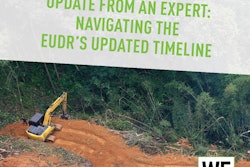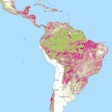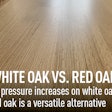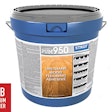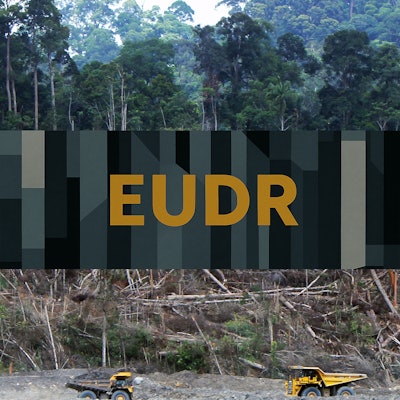
As the end of 2025 approaches, the EU Deforestation Regulation (EUDR) is steadily moving from policy concept to operational reality. At 11Foundry, we work daily with companies in the wood, paper, interior furnishings, and retail industries as they adapt to these requirements. That vantage point has given us insight into the questions, uncertainties, and occasional misunderstandings circulating in the marketplace.
In this article, I want to address four of the most common misconceptions about EUDR compliance that we see repeated in industry discussions. These points matter not only for companies importing directly into Europe, but also for North American suppliers further upstream who want to remain competitive in global value chains.
1. TRACES is not a “pre-clearing” system
It’s easy to see why the idea of “pre-clearing” has gained traction. From a data management perspective, it would be far simpler if suppliers could upload shipment details once, receive a reference number and then pass that number downstream. Operators or traders could then rely on those identifiers without handling the full set of due diligence data for every lot or shipment.
The regulation does not work this way. Trade Control and Expert System (TRACES) is an information system for registry of Due Diligence Statements (DDS). Companies must use TRACES to provide a DDS confirming their products are deforestation-free and compliant with the law. TRACES is not designed as a production or supplier management platform. It functions more like a customs system, and the rules around it are specific. Only operators, large traders or authorized representatives acting on their behalf can submit a DDS. When they do so, TRACES requires them to identify the operator or trader, the country of activity, the role of the submitter and the type of activity being undertaken. Each DDS must include the Article 9 dataset: geolocation of production plots, species, country of production, Harmonized System (HS) classification, quantity and other required attributes.
The key point is that TRACES does not allow “production” in a foreign country as an eligible role or activity. In other words, non-EU suppliers cannot submit DDS on their own behalf. Instead, they must provide the necessary data to their EU operator or trader customers.
In cases where products have already been placed on the EU market—for example, because they were domestically produced or re-entering after a prior placing—operators or traders must still submit their own DDS. In these situations, the DDS may reference the existing upstream record by including its reference and verification numbers, rather than resubmitting the full Article 9 dataset. That option is limited to goods already in circulation within the EU or re-entering it. For foreign production entering the EU market for the first time, the full Article 9 dataset must be submitted by the operator or large trader. In other words, there is no way to achieve compliance through a simplified “pre-clearing” approach.
2. “Operator” status is not based on HS codes
Another point of confusion involves who qualifies as an “operator” under the regulation. Some in the industry assume that the definition depends on whether a substantial transformation occurs, such as shifting a product from one HS code to another.
The regulation itself, however, is explicit. An operator is any company that, in the course of commercial activity, places in-scope products on the EU market for the first time or exports them. That includes importers, EU producers or harvesters, and manufacturers who transform raw or intermediate materials into regulated goods. Traders, by contrast, are those who buy and sell products already placed on the market.
In practice, this means that compliance responsibilities fall according to market role, not tariff classification changes. Misunderstanding this distinction can create serious gaps in compliance planning.
3. Satellite monitoring is not a requirement
Some technology providers suggest that satellite monitoring or remote sensing is central to EUDR compliance, and in some cases even market it as if it were required. That is not the case.
The regulation does not mandate satellite imagery, nor does it prescribe a specific type of technology. What the law requires is that operators hold and submit the Article 9 dataset for each shipment: geolocation of production plots, species, country of production, HS classification and quantity. Beyond that, operators must also carry out a due diligence process that includes:
- Assessing risk: Verifying and analyzing the Article 9 information to determine whether there is a risk that products are non-compliant. If such a risk exists, the products cannot be placed on or exported from the EU market.
- Mitigating risk: Where risks are found, taking appropriate steps such as seeking additional documentation, enhancing supply chain transparency or ceasing sourcing from high-risk suppliers.
- Maintaining a system: Establishing and maintaining a due diligence system that documents, reviews and records compliance, ready to be shared with authorities if requested.
Satellite monitoring can support these steps, particularly where land use patterns are complex or deforestation risks are high. But in other contexts—such as long-established supply chains with well-documented legal harvest—satellite data may add little value. Overreliance on satellite monitoring can even create confusion, especially if companies mistake it for a complete compliance solution.
The most important point is that operators retain responsibility for the entire due diligence process. They may use satellite tools if helpful, but compliance ultimately rests on having the right data, risk assessment, mitigation measures, and a documented system—not on deploying a specific type of monitoring technology.
4. The timeline is not likely to change
Lastly, there are those holding out hope that a last-minute revision or delay will soften the regulation before it takes effect. While there will almost certainly be ongoing discussion in 2026 and beyond, the implementation date is not in doubt.
Large operators must comply beginning Dec. 30. Small and medium-sized enterprises have until June 30, 2026. Those dates are set in the regulation and consistently reinforced in EU guidance. Companies preparing for compliance should assume that these deadlines will hold.
Looking ahead
EUDR is ambitious in scope and demanding in execution, but it is not very ambiguous about its expectations. For North American flooring companies, whether acting as suppliers to Europe or as part of global supply chains that eventually reach European markets, the implications are clear:
- Ensure your customers have the full Article 9 information they need, not just a reference number.
- Understand your actual role in the supply chain—operator, trader or supplier—and align your compliance or support responsibilities accordingly.
- Use technological tools like satellite monitoring only where they add value, recognizing that they are not required and never sufficient on their own.
Plan for the December 2025 deadline with confidence that it will not shift at the last moment.














